How Easy is It to Change a Garage Door
How to Install a Garage Door
Updated: Feb. 11, 2020
Tips, hints and what the instruction manuals don't tell you.
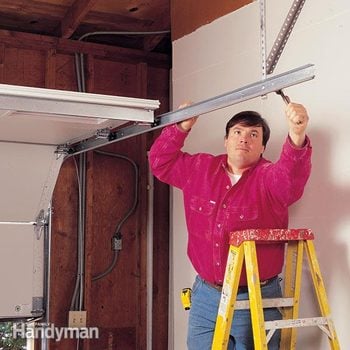
Garage door falling apart? Follow along as our expert shows how to safely install a new garage door and how to remove the old one.
You might also like: TBD
- Time
- Complexity
- Cost
- A full day
- Intermediate
- Varies
New garage door installation overview
An older double garage door can weigh anywhere from 250 to 450 lbs. This weight, coupled with deteriorating hardware, makes older garage doors a frequent scene of home accidents. Yet many of us enter and exit our homes through the garage door far more often than we do through the formal entry door.
In this article, we'll tell you the difference between a safe door and one that's unsafe. We'll also give you the helpful tips you're not likely to find in the manufacturer's instructions to correctly, and safely, install a new garage door with a torsion spring and do-it-yourself tensioning. Installing a new, double garage door yourself will save you several hundred dollars and should take eight to 12 hours if you're fairly handy. You can do most of the new garage door installation project yourself, but you should recruit help for removing the old door.
CAUTION!
Hire a pro to release the tension on an existing torsion spring system.
Two types of springs
Garage door springs come in two styles: torsion (see above), which mounts on the header above the door, and extension (Photo 1), which floats above the upper roller track. In the past, extension springs were safer to install but didn't have containment cables running through the center of the spring. Without cable, these springs become dangerous, heavy whips when they break. They also tend to be noisier than torsion springs, and we recommend you use them only if you don't have the 12 in. of headroom above the door that a torsion spring requires.
Torsion springs have three advantages over extension springs: They're quieter, safer and easier to fine-tune. Torsion springs are quieter because you don't have a spring knocking against a roller track. They're safer because when a spring breaks, it usually stays on the bar. Finally, you can fine-tune the tension on a torsion spring so the door is perfectly balanced. Setting the tension on torsion springs has always been very dangerous, but torsion and extension spring systems with easy, do-it-yourself tensioning (Photo 7) are available. If you don't use one of these DIY-friendly, easy tensioning systems (Clopay EZ-Set Spring and Wayne-Dalton TorqueMaster are two brands), you should hire a professional to release and set the tension on a torsion spring.
Buying a steel door
A standard double garage door is 7 ft. high by 16 ft. wide. Standard single doors are 7 ft. high by 8 or 9 ft. wide. Because the doors are so large, few home centers and only some garage door stores keep many doors in stock, so expect to order one instead of buying it off the shelf. Garage doors are available in wood, fiberglass and steel. Steel doors, like ours, are light, maintenance-free, affordable, readily available, and have an insulating value as high as R-19.
You can choose from three basic types of steel door: (1) steel only; (2) steel with insulation on the inside; and (3) steel on both sides with 1-3/8 to 2 in. of insulation. Other features that add to the cost are thicker insulation and windows, especially insulated windows. The do-it-yourself tensioning systems also add a little to the door's cost. Be sure to specify exactly what you want.
When you install a new garage door, replace all the hardware as well. If your automatic opener doesn't have an automatic reversing system that includes photoelectric eyes, replace it. Doors with openers also require two extra pieces of hardware that you'll see in Photo 4: a support strut (usually included in the door kit) and an opener bracket (not included). For doors with torsion springs located over the door, spend the $50 or so to have a garage door professional release the tension.
After your new door is installed, remove the old stop material on the outside of the door and replace it with the type that has a rubber weatherstrip gasket (available at home centers). Install the stop material with the door closed and with the gasket resting against the door at a 45-degree angle.
Seven Key to a Safe Door System
Light weight. Insulated double steel doors, even the heaviest ones, usually weigh 150 to 200 lbs., less than half the weight of the wood or hardboard doors they replace. And although weight isn't an issue if the springs are properly tensioned, all springs eventually weaken and break. If you are seeing that a spring might need fixing, check out this guide to garage door spring repairs.
Pinch resistance. The most common garage door injury is a finger that gets smashed, or even amputated, when it's caught between sections as the door moves. To help prevent these accidents, look for a door that offers pinch-resistant section designs.
Containment cables. When old extension springs break, the springs and cables become heavy whips that damage cars and even injure people. To solve the whipping problem, manufacturers now offer containment cables that run through the center of side-mounted extension springs. If you have extension springs and don't plan to replace your door, make sure the springs have these containment cables, or have a professional install them.
Safe automatic door openers. All automatic openers must now have an auto-reversing mechanism and photoelectric eyes located near the floor on both sides of the door (see photo). If the door is closing and the beam between the eyes is interrupted, the door will automatically reverse. If the eyes aren't connected, the door won't operate. For instructions on how to install a new garage door opener, see How to Install a Garage Door Opener.
Securely mounted hardware and rails. Torsion spring brackets should be firmly mounted to the wooden header above the door. Roller track support brackets and the opener should be securely bolted to the rafters.
Annual maintenance. Make an annual check of all nuts and bolts on rails and rollers to make sure they're firmly tightened. Check the condition of all cables to make sure they're not worn or frayed. Lubricate rollers and springs with a garage-door lubricant (see How to Fix a Noisy Garage Door for maintenance and problem-solving tips). The door should operate smoothly and be properly balanced. Check the balance by disconnecting the opener and lowering the door halfway- the door should hold its position. If it doesn't, adjust the spring tension or replace the springs.
Opener switch location. Children like to play with automatic door openers. To prevent them from doing this, mount any opener switches at least 5 ft. above the floor.
Required Tools for this Garage Door Installation Project
Have the necessary garage door tools for this DIY project lined up before you start—you'll save time and frustration.
Required Materials for this Garage Door Installation Project
Avoid last-minute shopping trips by having all your materials ready ahead of time. Here's a list.
Originally Published: January 18, 2019
Source: https://www.familyhandyman.com/project/how-to-install-a-garage-door/
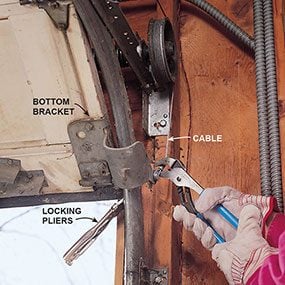
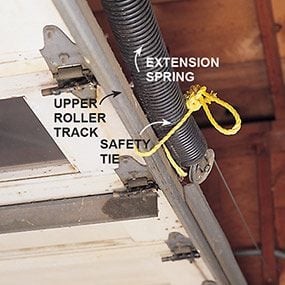

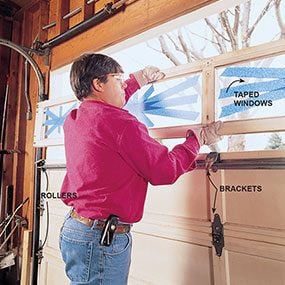

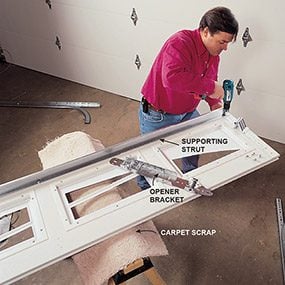
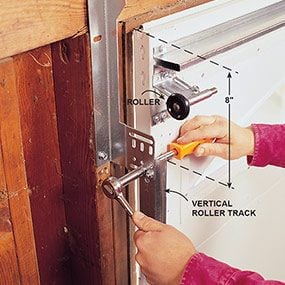
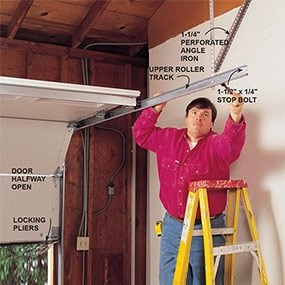
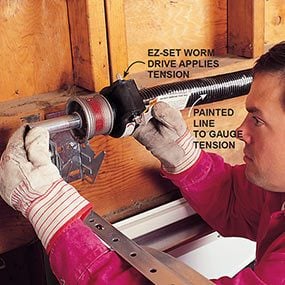
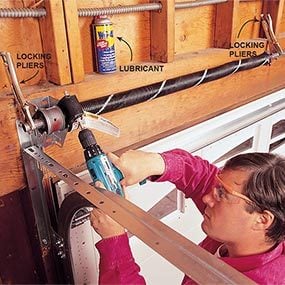
0 Response to "How Easy is It to Change a Garage Door"
Post a Comment